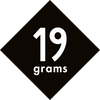In a commercial sense, coffee was first grown in El Salvador in the 1850s. Since then, it has been an existential part of the economy as well as the mainstay of exports. In 1880, El Salvador was the fourth largest coffee producer in the world. At that time, twice as much coffee was produced as today. The focus on cultivating coffee plants came from the invention of a chemical dye for indigo. Previously, the indigo plant was the country's number one crop.
In El Salvador, only Arabica is cultivated. It is predominantly the Bourbon variety, but the indigenous Pacas and Pacamara varieties also account for a third. The coffee plants are often grown together with other trees, for example fruit trees, on the mountainsides facing the sea. Thanks to the climate, which is particularly humid and warm during the day and cools down considerably at night, the coffee cherries are protected from drying out and can develop a particularly fruity flavor.
Coffees from El Salvador have a mild lemony acidity, which is balanced with a honey-like sweetness. The flavour profile is often rounded off with a full-bodied chocolate note, which is also reflected in the expressive rich body.




